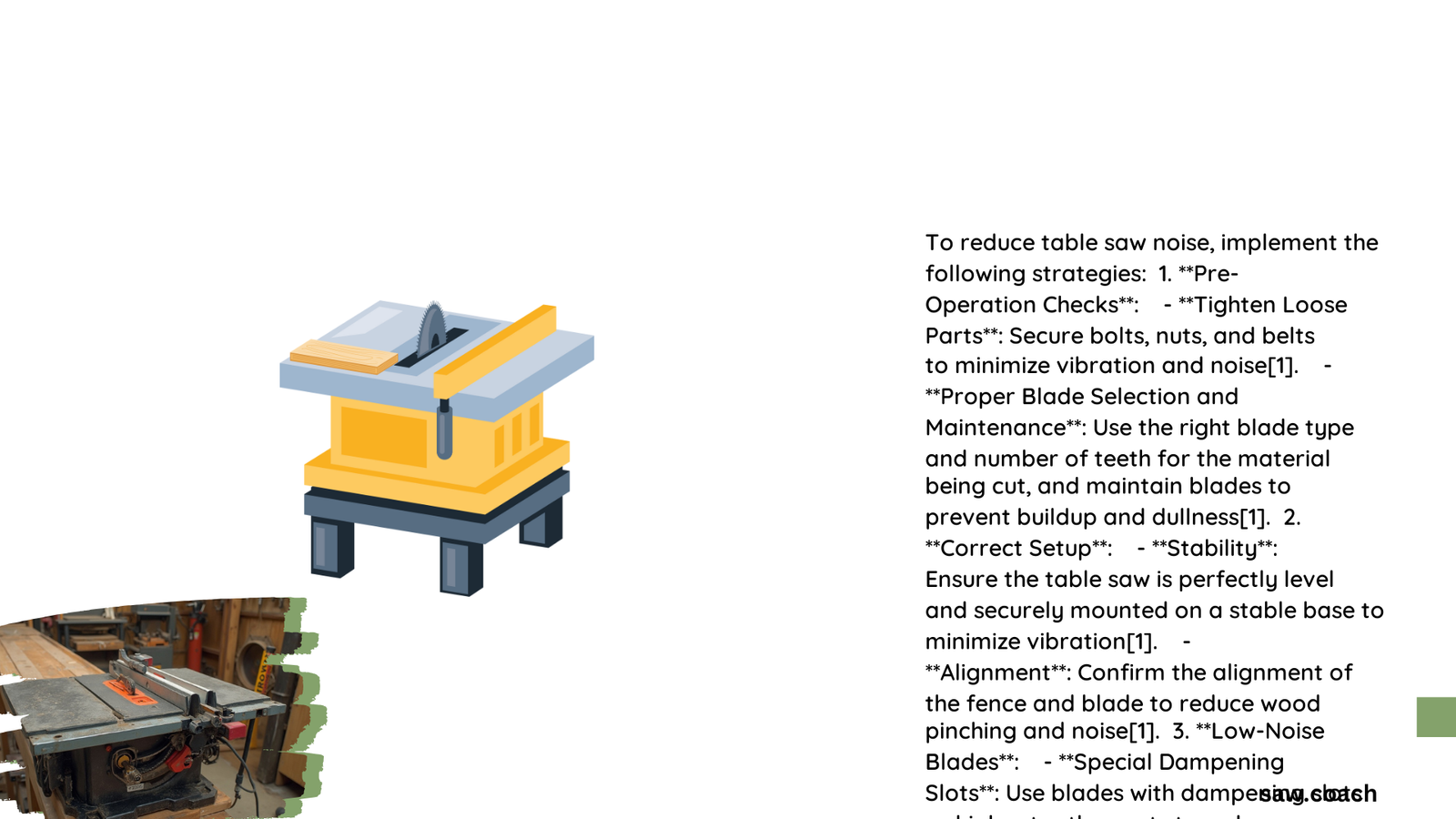Table saw noise reduction is a critical concern for woodworkers seeking a more comfortable and safer working environment. Excessive noise not only causes hearing fatigue but can also indicate potential mechanical issues with your equipment. By implementing strategic techniques ranging from blade maintenance to acoustic modifications, woodworkers can significantly decrease sound levels, improve workspace comfort, and extend their tool’s operational lifespan.
Why Does Table Saw Noise Matter?
Table saw noise isn’t just an annoyance—it’s a potential health hazard. Prolonged exposure to high decibel levels can lead to:
- Hearing damage
- Increased stress
- Reduced concentration
- Potential workplace safety risks
How Loud Are Table Saws?
| Saw Type | Average Decibel Range |
|---|---|
| Jobsite Saws | 95-105 dB |
| Cabinet Saws | 85-95 dB |
| Portable Saws | 100-110 dB |
What Causes Table Saw Noise?

Several factors contribute to table saw noise:
- Mechanical Vibrations
- Loose components
- Misaligned parts
-
Unbalanced blades
-
Motor Characteristics
- Belt tension
- Motor quality
-
Age of equipment
-
Blade Condition
- Dullness
- Improper tooth configuration
- Material buildup
How Can You Reduce Table Saw Noise?
Maintenance Strategies
Tighten and Align Components
- Check and tighten all bolts weekly
- Ensure blade alignment is precise
- Inspect belt tension regularly
Blade Management
- Use high-quality blades with appropriate tooth count
- Clean blades after each use
- Replace dull blades promptly
Soundproofing Techniques
Acoustic Modifications
- Apply dense rubber anti-vibration mats
- Install acoustic foam on saw chassis
- Use damping paint on metal surfaces
Upgrade Options
- Replace standard V-belts with poly-V belts
- Consider upgrading to quieter cabinet saw models
- Install sound-absorbing enclosures
What Equipment Helps Noise Reduction?
Recommended Products
- Anti-Vibration Mats
- Rubber composition
- 1/2 inch to 1 inch thickness
-
Weight-rated for heavy machinery
-
Acoustic Foam Panels
- Density: 1.5-2.5 lbs per cubic foot
- Thickness: 1-2 inches
-
Self-adhesive options available
-
Specialized Saw Blades
- Thin-kerf designs
- Carbide-tipped with noise-reducing slots
- Matched to specific cutting applications
What Are Cost Considerations?
Noise Reduction Investment
| Modification | Estimated Cost | Noise Reduction Potential |
|---|---|---|
| Blade Replacement | $50-$150 | 3-5 dB |
| Anti-Vibration Mat | $30-$100 | 2-4 dB |
| Acoustic Foam | $50-$200 | 4-6 dB |
Professional Recommendations
- Always wear hearing protection
- Perform regular maintenance
- Invest in quality equipment
- Create a comprehensive noise management strategy
Final Thoughts
Table saw noise reduction requires a multifaceted approach combining maintenance, strategic upgrades, and thoughtful workspace design. By understanding noise sources and implementing targeted solutions, woodworkers can create safer, more comfortable working environments.
Pro Tip: Consistent maintenance is more effective and cost-efficient than reactive noise control measures.
Reference:
– Woodwork Noise Control Guidelines
– Professional Woodworking Safety Standards
– Acoustic Engineering in Workshop Design
